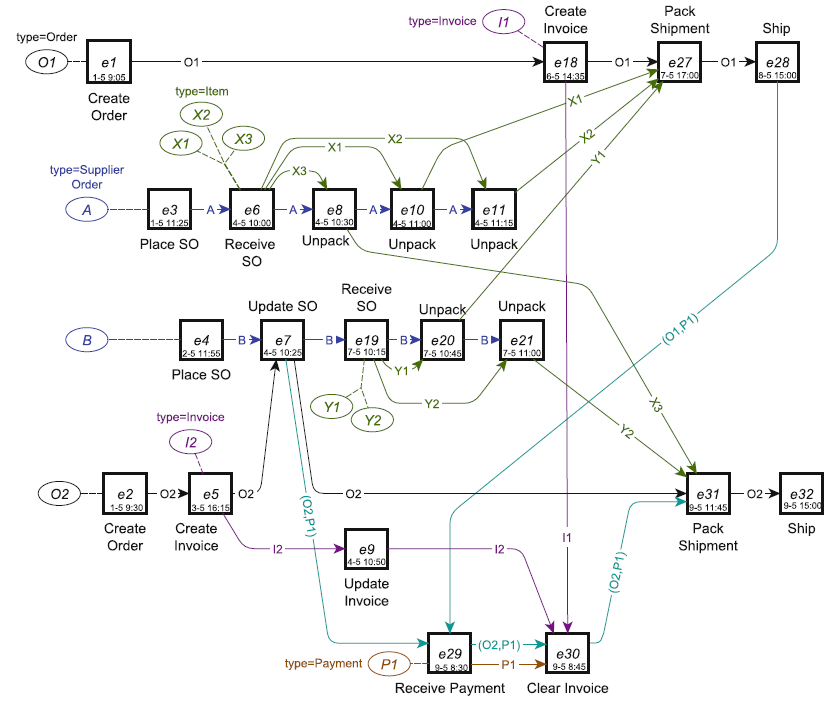Project: Visualization of event knowledge graphs for object-centric process mining
Description

Existing process mining techniques on traditional event logs result in many problems. If an event is related to different cases, we get false behavior in the model (convergence), for a case there also may be multiple instances of the same activity within a case and false statistics may be introduced (divergence). Object-centric process mining (OCPM) addresses these problems by modeling the flow of objects without having to pick a single case ID to circumnavigate these existing problems.
One method to model an object-centric process is to use a knowledge graph to represent the multivariate nodes and edges (see e.g., [1]). Typically, the knowledge graph is represented with a node-link diagram. The position of the nodes and edges is determined using a force-directed layout algorithm. However, due to the size of the network, this results in a suboptimal layout, and, in the worst case a hairball visualization. Therefore, these layouts are often produced by hand, which is labor-intensive.
In this project, we want to
investigate better ways to lay out and visualize event knowledge graphs. Attention
should be paid to a readable layout, taking into account the different node and
edge types. Interaction for analysis and input of domain knowledge will also
play a big role in the final solution.
Requirements
- Good programming skills
- Understanding of knowledge
graphs, ideally also on process mining methods
- Visualization background
References
[1]
Fahland, D. (2022). Process Mining over Multiple Behavioral
Dimensions with Event Knowledge Graphs. In Process Mining
Handbook (pp. 274-319). (Lecture Notes in Business Information Processing;
Vol. 448). https://doi.org/10.1007/978-3-031-08848-3_9
Details
- Supervisor
-
 Stef van den Elzen
Stef van den Elzen
- Interested?
- Get in contact